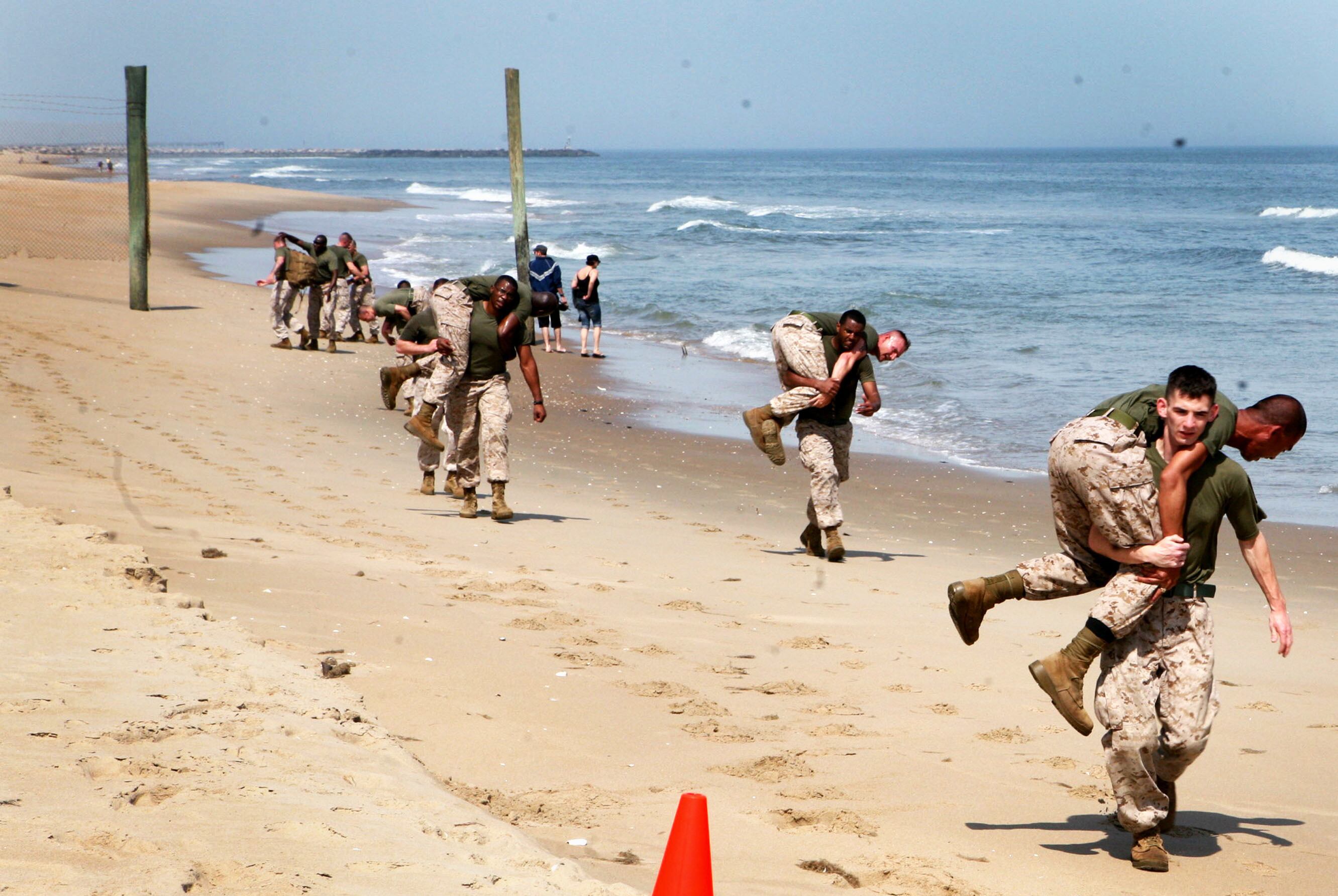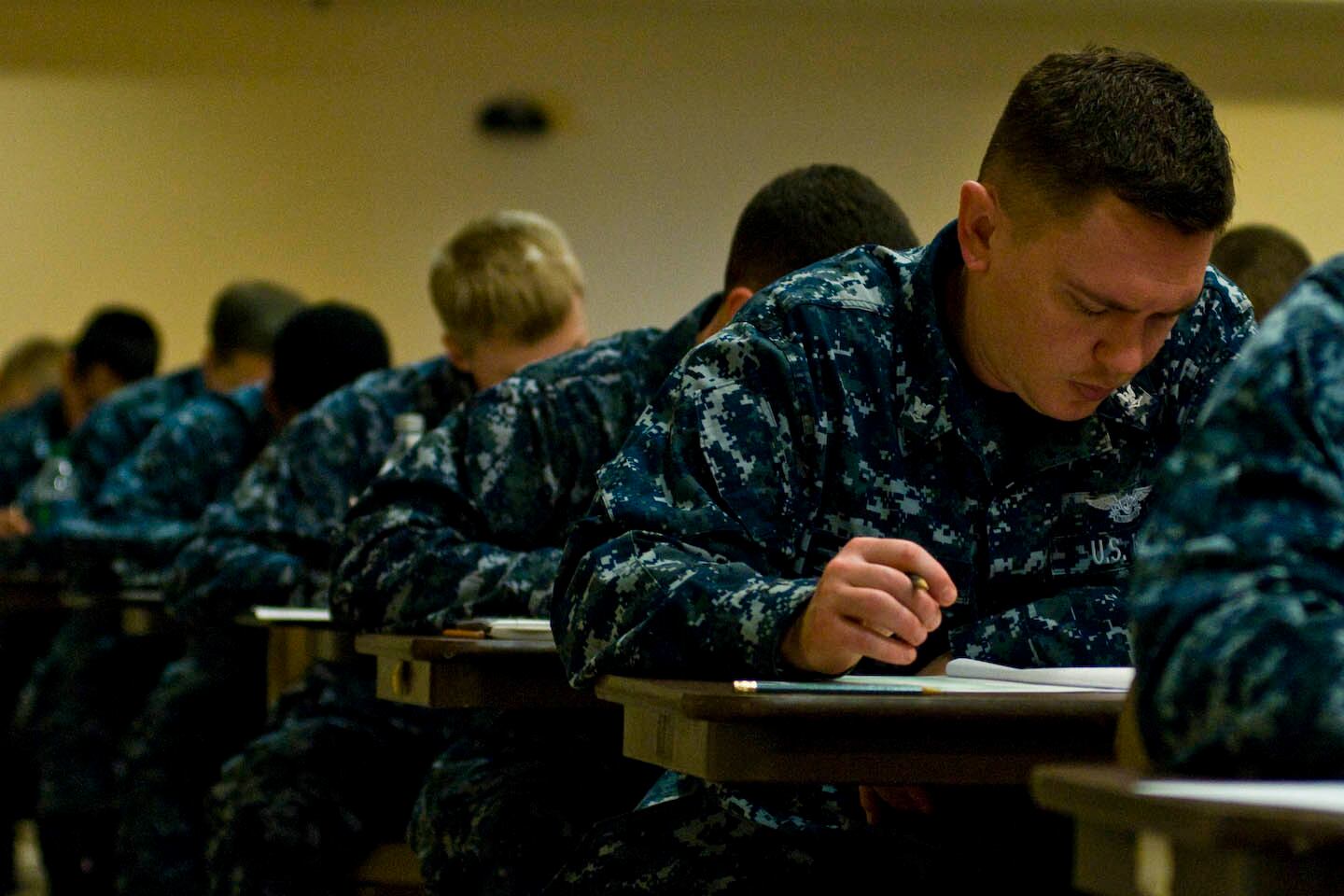A month after Navy Secretary of the Navy Ray Mabus announced far-reaching personnel policy moves in a speech at the Naval Academy, May, 13 in Annapolis some very bold goals, he's released an ALNAV to the Navy and Marine Corps that adds new details and deadlines and a few new details.
Officials say the purpose of his ALNAV message, published FridayJune 11, XXX/XX which was released June XX is to "codify" many of the new initiatives announced in the Annapolis speech and set formal goals and timelines for much — but not all of what he announced was in the work.
"We are moving forward with multiple initiatives that will impact every sailor and Marine," Mabus said in the ALNAV 050/15 opening of the message, released Thursday. "Some will be implemented immediately, others in the coming months and years."
Some goals — and how the service will deliver on them — remain murkycloudy, such as Mabus' call to make women a quarter of the Navy and Marine Corps, a landmark change that will require more recruiting and much better retention. Personnel officials say he's not backing down, and details on this initiative are expected to be revealed in an upcoming message., the this message is expected to be the first of many over the next few months.
Here's a look what Mabus said in May and where it now stands in June. at the roadmap so far.

A team of Marine Corps Security Cooperation Group Marines strengthen their combat life-saving skills during an offsite training event aboard Camp Pendleton State Military Reservation in Virginia Beach, Va., March 23. The unit conducted a Medical Practical Applications Lane combat fitness course, which consisted of a three-mile litter run performed in boots and utilities.
Photo Credit: Gunnery Sgt. Alexis Mulero/Marine Corps
General military training
Both the Navy and Marine Corps are responsible for certain blocks of mandatory training each year. Sailors have both Navy and DoD-mandated training topics that must be addressed done periodicallysome periodicity. But Mabus sees these requirements, which have grown over the years as a distraction to commanders. In the past two years, the number of big Navy-mandated topics has dropped.
Mabus said in his speech that sailors need "intellectual development" to be innovative, but that he doesn't see GMT as contributing to that end and instead sees plethora of requirements distracting to commands in the fleet.
"The elementary, repetitious and time-consuming tasks of General Military Training just don't achieve that end and eat into COs' ability to spend more of their precious time training to fight and win," he said May 13. "Therefore, I am ending GMT as we know it. Beginning June 1st, we will stop all Department of the Navy-directed GMT on Navy Knowledge Online."
Officials say the deadline set by Mabus was met, at least for Navy-mandated GMT. So, Now CO's can decide what training to mandate, based on the command's training needs. They can also decide whether training is done online or by an instructor in a classroom.
"Effective immediately, the Services [i.e., commanders] will be responsible for Department of the Navy directed annual training on Navy Knowledge Online and MarineNet," the message states. "We will also begin working with the Secretary of Defense to modify DoD-required training so that Commanders can conduct training as they see the need, giving them more choice in how training is delivered, and what type of training is delivered."
Personnel officials say those discussions could take some time and result in the Navy convincing them on new ways to deliver the training, such as through interactive games as the Navy has proposed and will field for some GMT topics starting in 2016.
Fitness
Mabus has ordered a comprehensive review of the Navy and Marine Corps' fitness programs.
Mabus' speech called the Navy's current physical fitness test "a high-stakes, bi-annual crucible that often results in sailors resorting to drastic, unhealthy measures" to ensure they pass.
And the fitness assessments, both the test and the body composition,"often inaccurately assess one aspect of overall fitness," he said. "We will instead focus on evaluating health, not shape."
To do this, he's ordered a complete revamping of both the Navy and Marine Corps' fitness programs.
Fitness requirements the message says, should "properly measure the conditioning required to complete the specific mission," according to the ALNAV. "They will integrate spot checks between test cycles and [ensure] there are programs in place to recognize individuals for superior physical achievement, including documented performance on fitness reports and evals."
Sources tell Navy Times, The Navy is planning to try new methods of assessing body composition and will look into a ribbon or medalsawards to recognize superior fitness, something service officials have long fought instituting.
But now the time is right, Mabus says and says that By the end of 2015, Mabus wants new programs in place that "promote a year-round culture of health and fitness."
And Getting there has a short fuse. The message gives the Navy The message states that within 60-days of the ALNAV's release, both the Navy aand Marine Corps 60 days to have their plans on will have plan on Mabus' desk describing their new way ahead.
Navy personnel officials say tell Navy Times their proposal is nearly done and currently is in routing through Chief of Naval Operations Jon Greenert and could be delivered to the secretaryon the secretary's desk well ahead of schedulethe deadline.
In the meantime, Mabus wants the services to adjust fitness center hours to improve access, especially for those who get to work early or stay late. nsure that everyone has access to a place to work out, regardless of their work schedule.
In his speech, Mabus He also wants the outlined specific goals for both the Navy and Marine Corps to revamp their chow halls to and stated in the message his desire they "provide more healthy eating options at sea and shore facilities."
In the speech, he said the dietary effort will start in fiscal 2016, with one sea-based and one shore dining facility experimenting with more healthy and nutritious food. This effort, though in the planning stages will be discussed in future messages, sources said.

Navy child development centers will soon open two hours earlier and remain open two hours later. Here, retired MR1 Harley Herndon teaches children at Mayport (Fla.) Child Development Center how to use a hammer.
Photo Credit: MC3 Mark Andrew Hays/Navy
More child care
Child care for active-duty women and families is one of the foremost retention concerns that Navy officials say they hear. Navy officials have been hearing from service women and families that one of the major retention issues is ensuring their children are cared for while they're at work.
"We've already established 24/7 child care development centers in three fleet concentration areas," Mabus said in his speech.
While it's not feasible to do that for while making every center, round the clock would be nice, it's not feasible, officials say, the service would like to gradually expand in that direction. Starting Oct. 1, all of the services' child care facilities will be open four more hours each day, two hours earlier and two hours laterextend their hours by four hours — two at each end of the day.
The services must provide more flexibility for sailors and MarinesFor those with newborn children, according to the ALNAVMabus says, the services needs to offer more flexibility. In his speech, Mabus he announced the service is proposing legislation to double paid maternity leave from 6 to 12 weeks. In addition, service officials plan to change policy to "better support paternity and adoption leave," though the ALNAV it doesn't state how this will happen.
In addition, Mabus wrote, in the message that a new DoD policy will allow the services to ensure more dual spouse military couples are co-located. a coming revision of Department of Defense policy for the assignment of dual-service military couples, the Navy and Marine Corps will now be better able to insure more military spouse co-location. Officials say they are working out the details with DoD and the other services and more information will come in future messages.

Meritorious advancements will skyrocket next year under Secretary Ray Mabus' sweeping personnel initiatives. Here, sailors at Naval Air Station Patuxent River, Md., take the Navy-wide E-5 advancement exam on March 12.
Photo Credit: MC2 Kenneth Abbate/Navy
Spot advancement
On July 1, the Command Advancement Program will become the Meritorious Advancement Program, officials tell Navy Times, and the first spot advancement promotioneritorious Advancement "season" will begin. Skippers of sea duty commands can spot promote advance their best sailors to E-4, E-5 and E-6 in the three-month window that ends Sept.ember 30th. during which they're asking sea duty commanding officers to advance their best sailors ahead of the fall exam cycle.
An even bigger change is in the works. The following year,This year, the Navy will change the name from the Command Advancement Program to the Meritorious Advancement Program.Next year, the Navy will more changes will come to will be instituted to vastly increase the number of sailors that commands can who can be spot advanced by their commands. As MAP replaces the Traditionally, commands have used what up to now has been called theCommand Advancement Program,CAP, officials hope to change both the culture and the use of the program'sculture and use in the fleet. Some sailors have griped that, up to now, the intent of the program had been subverted the , which some had griped was used to help sailors facing high-year tenure caps, rather than reward the top performers. much like a medal to reward sailors with a new stripe for exceptional performance, or on the other end of the spectrum, to save a struggling sailor from high-year tenure.
By October 1, Mabus says in the message, the service will rename it the Meritorious Advancement Program and plan for it to become regular part of the advancement system.
Navy Commands have long asked for more of a voice in deciding which of their sailors get advanced.
MAP will Personnel officials are trying to grant that wish through morphing the existing CAP into one that allows grant authority for more fleet-based advancements for top performers, of the top performing sailors, letting the rest battle for quotas through the semi-annual Navy-wide advancement exams cycles.
Also bBy October, the beginning of fiscal year 2016, he says the Navy will have a plan in place to expand the number of spot advancement quotas to 5 percent of the total operational force, including those on shore duty.
"Marine Corps meritorious advancement program is already at this level and will continue to maximize its use of the program," Mabus said in the message.new quote below/MF.
"Marine Corps will continue to maximize its use of Meritorious Promotion Boards," Mabus wrote. Sources tell Navy Times, the Corps' already meritoriously promotes to nearly the 5 fivepercent figure he's looking to expand the Navy to next year.
And to maximize advancements by fleet and Corps leaders, Mabus plans that both services will recycle unused quotas to maximize these spot advancements.
To maximize advancements by fleet and Corps leaders, Mabus is directing each of the services to recycle unused quotas, so that slots unused by one command can be used by another command in the same season.
"Each of the services will have the ability to redistribute quotas as required to ensure that no quota goes unfilled," Mabus wrote. "This change will potentially result in a commanding officer's ability to return unused meritorious promotion quotas or petition for more."
Officer personnel changes
Changes to officer personnel management will start soon with the establishment of an Office of Talent Optimization at the Naval Academy in Annapolis by September of this year.
This is a new twist that wasn't in his earlier speech.
This office will assess the military's needs and align military needs with "current and future educational and labor market conditions." They're hoping the office will help with service selection in the future to better align the talents of officers with the Navy's needs and "align those developing talents to long-term war fighting requirements."
But evenThough based at Annapolis, this effort to revamp an officer's initial assignments could eventually reach way beyond the banks of the Severn River and the ranks of the Academy Brigade.
Because even though initially it's being developed to help Academy Midshipmen get plugged into the career path that best meets their talents and abilities, Eventually, this could also "inform the assignment process for sailors and Marines entering the service from other commissioning sources."
Beyond officer accessions improvement, Mabus also wants to ditchtotally rework the long-standing policies of year-groups and other hard and fast career milestones that have made the officer corps Navy a rigid, "up or out" system.
Mabus also wants to ditch the long-standing practice of tying promotion opportunities to year-groups, as well as required milestones, that have made the officer corps a rigid "up or out" community.
"We will work to find places to more closely align promotion timing to performance, experience and achievement of community career milestones."
Instead of a rigid set of the mandatory career milestones that exist today in all officer communities, what Mabus wants is a way to take into account more of the "total officer" when looking at promotions and career potential.
"We will identify opportunities to consider factors such as unique career experiences and niche talents, to ensure best and fully qualified officers are promoted with consideration for current abilities and talents, rather than placement in a particular promotion zone," according to the message.

Marine Corps Air Station Yuma, Ariz., Commanding Officer Col. Ricardo Martinez helps children plant seeds at the station Child Development Center in recognition of Earth Day, April 22, 2015.
Photo Credit: Cpl. Travis Gershaneck/Marine Corps
New opportunities
Mabus wants a modern Navy featuring the best available technology in sea, subsea and air platforms, and a personnel system to match, one that provides more career flexibility.
This is seen as a key factor in future retention — especially for women — something the service must have to compete with private sector companies that can often pay more and that already provide more already have flexible career choices in place.
To do this, he wants to offer more sabbaticals and a robust internship program that will allow officers to mingle with corporate counterparts to learn and bring back best practices backto the Navy and Marine Corps.
"Our structured career paths often cause us to lose high quality people who find greater flexibility and options to succeed outside of naval service," Mabus wrote. "We have made a concentrated effort to expand career flexibility in several different areas."
BMabus would like to see more sailors take advantage of the sabbaticals become mainstream and get away from the niche program it's been since it was first piloted By the navy nearly a decade ago. He's petitioning Congress to expand the Career Intermission Program, which allows them to take up to three years off. ing absence from the service for up to three years to pursue goals of their choosing.
"My intention is to expand this program ten-fold, growing the number from 40 to 400, after we receive congressional approval," he said.
Another enticement he sees as necessary is expanding graduate school opportunities for officers as soon as possible.
"By October 1, we are sending two additional top-performing officers to graduate education at leading universities, with plans to expand to 30 additional officers per year beginning in the Fall of 2016," Mabus said in the message.
And it won't be big Navy picking everyone going to grad school, either. Instead, he want to put selection in the hands of commanding officers and fleet commanders to identify those "hot running" officers they feel would benefit from the education — even if those officers weren't even considering the idea, sources say.
And Mabus isn't happy having officers learn from academia, he wants them to learn from private industry, too.
"We will partner with Fortune 500 CEOs to create the 'Secretary of the Navy Industry Tour," Mabus announced in his speech. "Commanders will have the authority to send their best-qualified officers to work at America's top firms."
Though he's not said when the first officers will leave the wardroom for the boardroom, he mandates in the message that the program will be official established by Oct. 1.
Diversity goals
Mabus said in his speech that he wants a more diverse force and, specifically, he wants to increase the numbers of women in the ranks.
He'd like to see women comprise a quarter of the Navy, and of every fleet, unit to be women by 2025. In addition, he says he wants every operational billet to be open to women as well — giving them an equal footing in the service as men.
But the message doesn't detail how the service will achieve these goals, which would require a sea change in female recruiting and retention to come anywhere close to reality. Details on this initiative are likely in later messages, officials say.
But in the message, no details were given on just how the service would proceed and personnel officials tell Navy Times that's by design as this topic will be the subject of one or more future message in the near future.
Mabus finished the message with an acknowledgement that this message is the first of many messages and directives this year and next and invited feedback from the fleet on his proposals and coming pilot programs, he wrote in conclusion.
"The above initiatives represent my initial charge to modernize our legacy personnel system, further enhance our achievement-driven culture, and evolve our learning and recognition programs for the future."
Mark D. Faram is a former reporter for Navy Times. He was a senior writer covering personnel, cultural and historical issues. A nine-year active duty Navy veteran, Faram served from 1978 to 1987 as a Navy Diver and photographer.




